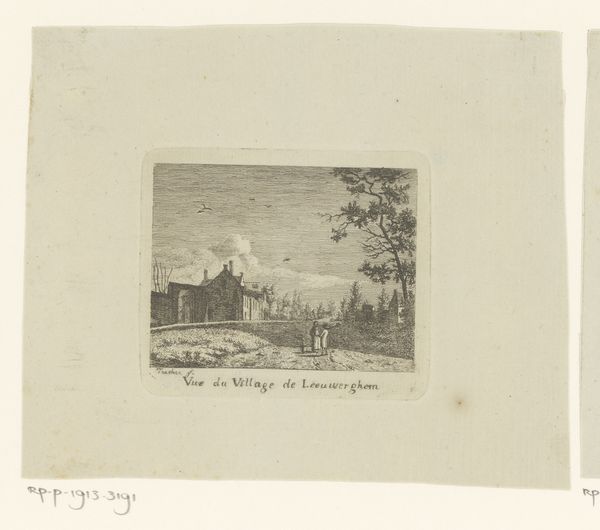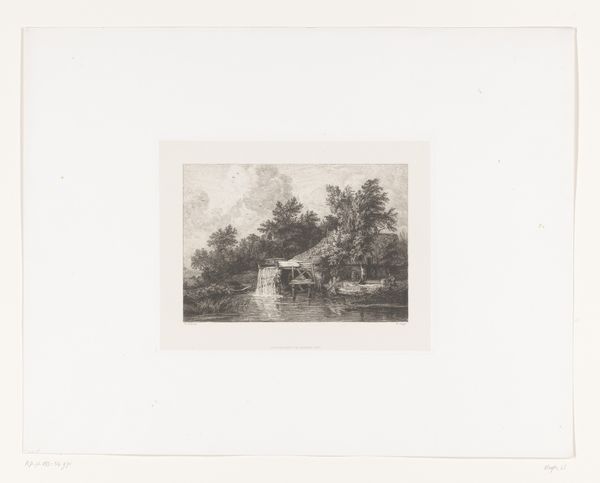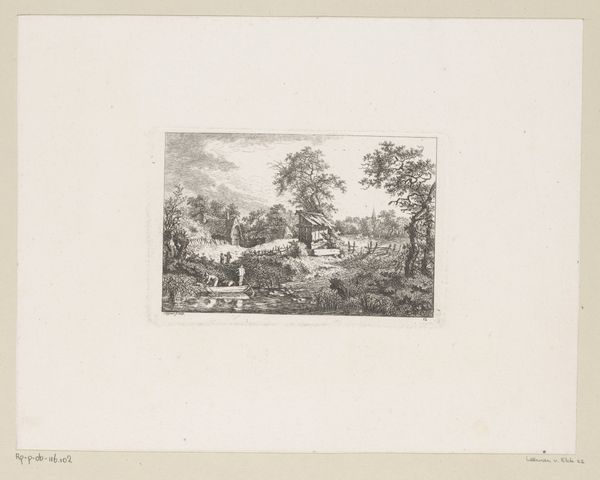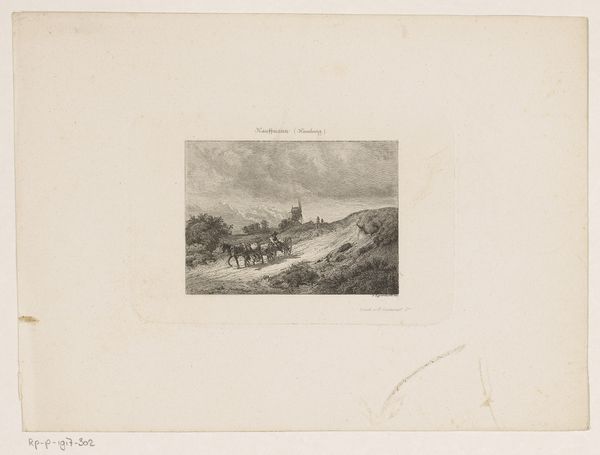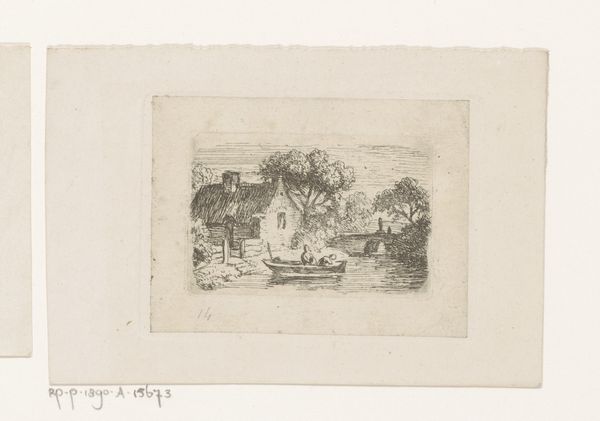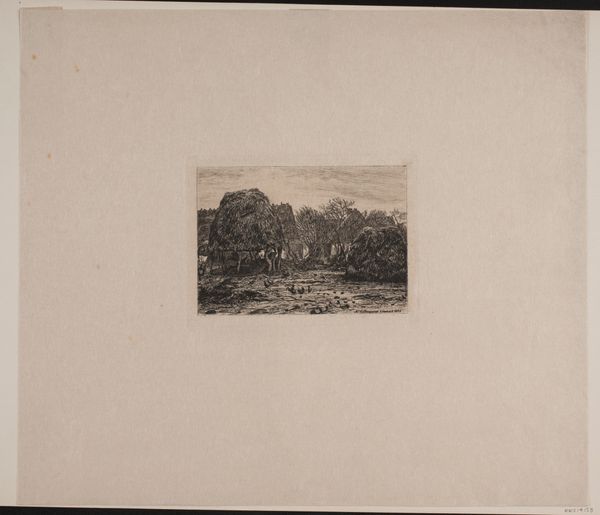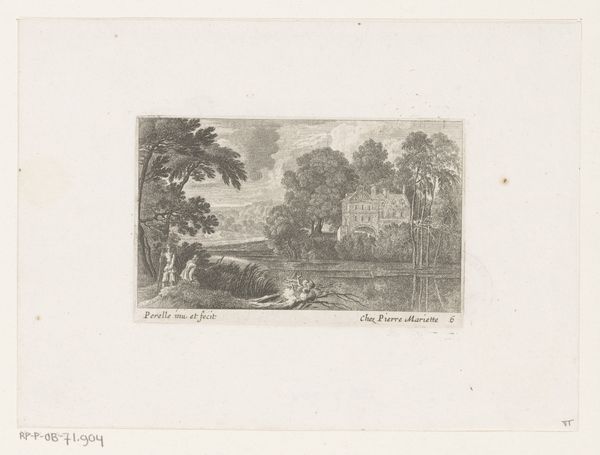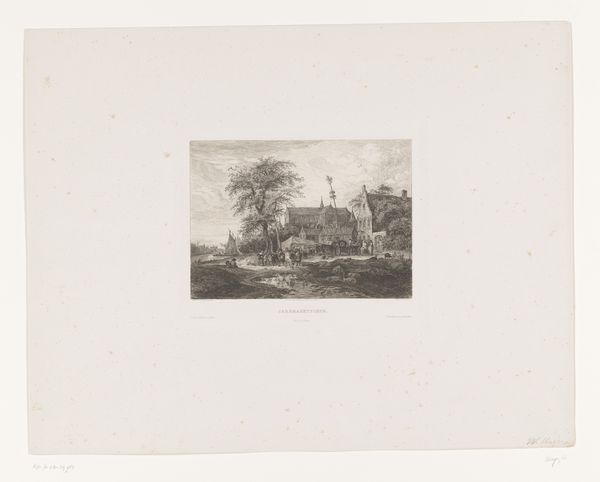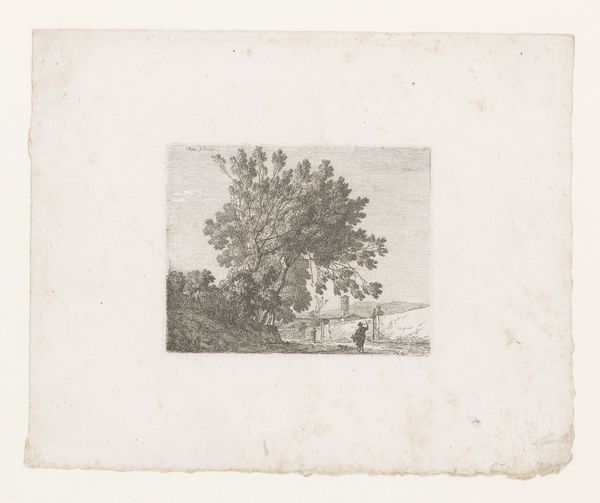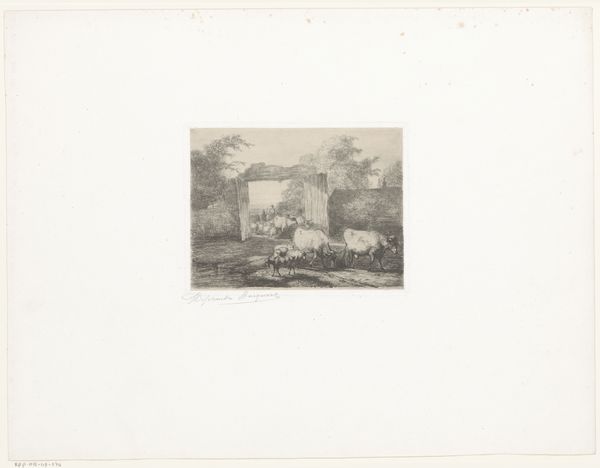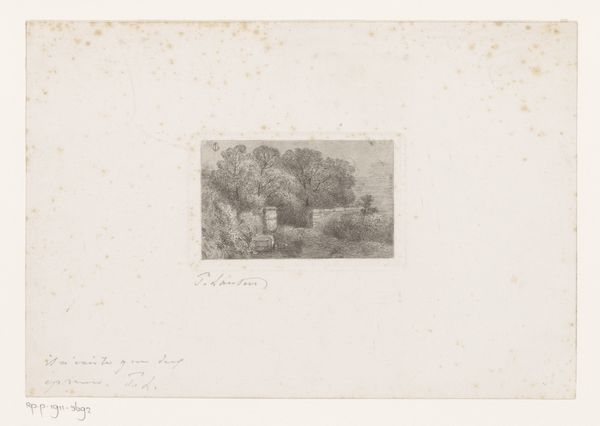
Landschap met twee personen in een roeiboot bij een woning 1799 - 1874
0:00
0:00
hendrikjozeffranciscusvanderpoorten
Rijksmuseum
print, etching
#
dutch-golden-age
# print
#
etching
#
landscape
#
romanticism
#
genre-painting
Dimensions: height 46 mm, width 67 mm
Copyright: Rijks Museum: Open Domain
Curator: Hendrik Jozef Franciscus van der Poorten, between 1799 and 1874, etched this charming scene, "Landscape with Two People in a Rowing Boat Near a House," currently held here at the Rijksmuseum. Editor: Oh, it's a quiet sort of beauty, isn’t it? The way the dark, dense etching gives a kind of secretive, almost hushed feeling to the whole landscape. I immediately feel like I’m eavesdropping on a very private moment. Curator: It's a fantastic example of Dutch Golden Age etching. Look at the detail he achieves with line and the tonal range that he develops despite the image's size. You can clearly see influences from the broader romanticism movement too, focused on simple beauty and direct connection to nature. Editor: Exactly! The light feels… staged, almost theatrical. And yet there's a genuine stillness to the water and the house, like a stage set but also like a real place with years of life lived inside its walls. It's holding something back, inviting you closer to a gentle story that you'll never quite hear. Curator: And contextually, images like this were hugely popular amongst the rising middle classes. Print offered more democratized access to art. Rural idylls offered an escape from the grime and congestion of industrializing cities, appealing greatly to emerging bourgeoise sensitivities. Editor: Absolutely, an escape. Though, isn’t there also something about the medium itself? The etcher makes such an immediate physical mark—every line is a decision, like carving a memory directly into the plate. That sense of labor somehow lingers. Curator: Precisely. And its relatively small scale encourages an intimacy of viewing that paintings can often lack. You can imagine the print being circulated amongst a family or small gathering, becoming deeply entangled with shared stories and emotions. Editor: The figures in the boat—it's hard to say, are they on their way to somewhere, or coming back? I want to know who they are, even though it is really none of my business. Maybe I will write a little something. Curator: It’s amazing to consider the layers of historical reception the piece carries with it now too—each visitor brings a new perspective, a different lens. We can’t fully access a historical audience, but that imaginative gap can also be incredibly generative. Editor: Yes. Well, for me, it will sit and remind me about taking the long route, even if I have no place to be. Curator: And I'm thinking about the power of image dissemination in a pre-digital world. These small prints held surprising social significance in shaping the self-image of a nation.
Comments
No comments
Be the first to comment and join the conversation on the ultimate creative platform.
